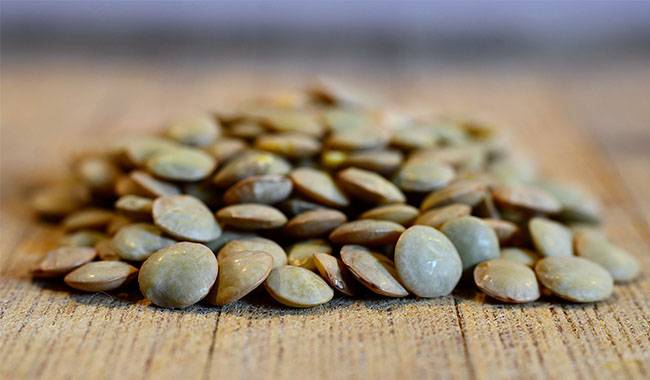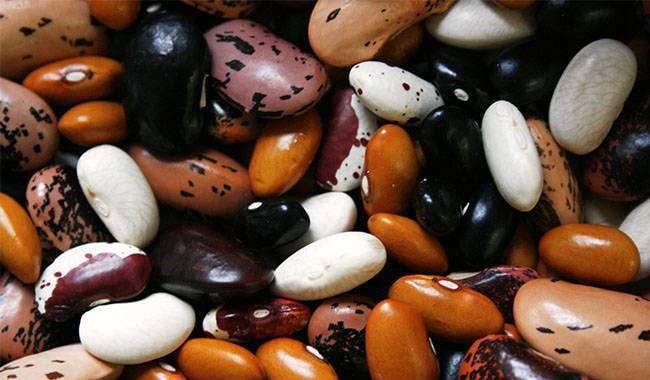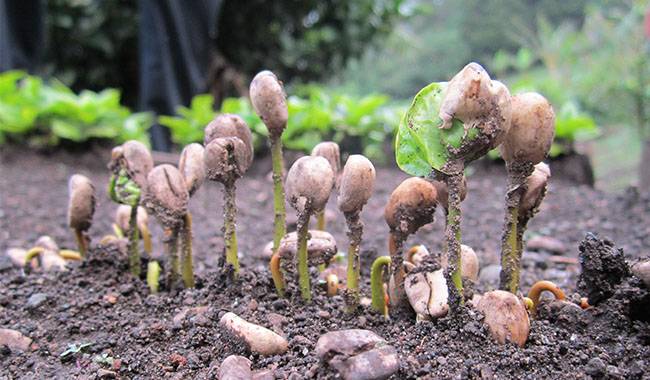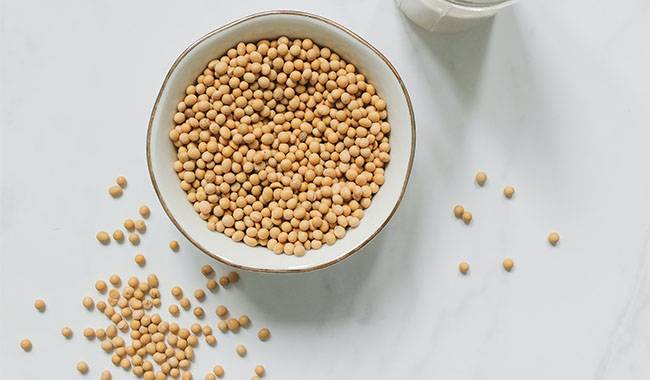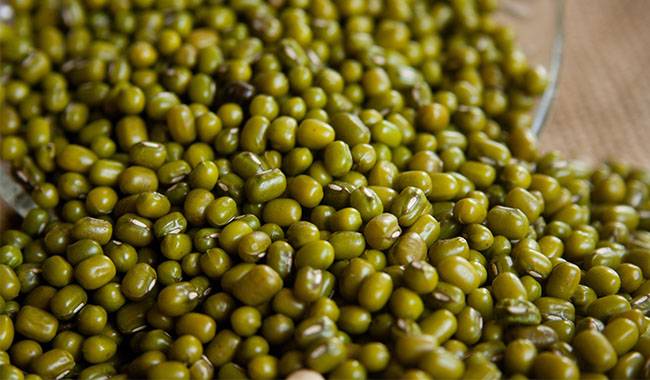
Mung bean is the seed of the legume mung bean, also known as green bean (named because of its green color), green bean, plant bean, etc. It has been cultivated in China for more than two thousand years.
The place of origin is in India and Myanmar. Now East Asian countries are widely planted, Africa, Europe, the United States also have a small amount of planting, China, Myanmar, and other countries are the main exporters of mung beans.
What are the benefits of mung beans? Mung bean seeds and stems are widely eaten. According to the record of Chinese medicine, mung bean has a detoxification effect.
The mung bean soup in China is a summer refreshing drink that is always available for families. It is a refreshing appetizer and is suitable for all ages. Traditional Chinese mung bean products include mung bean cake, mung bean wine, mung bean cake, mung bean paste, mung bean noodles, etc.
The appearance characteristics of mung bean
An annual erect herb, 20-60 cm tall. The stem is brown and bristles. Pinnate compound leaves with 3 leaflets;
The stipules are scutellate, ovate, 0.8-1.2 cm long, ciliate; the small stipules are conspicuous, lanceolate;
Leaflets ovate, 5-16 cm long, 3-12 cm wide, laterally somewhat oblique, entire, apex acuminate, base broadly cuneate or round, with sparse hairs on both sides, three distinct veins at base;
The petiole is 5-21 cm long; leaf shaft is 1.5-4 cm long; petiole is 3-6 mm long. Racemes are axillary, with 4 to several flowers, up to 25;
The total pedicel is 2.5-9.5 cm long; the pedicel is 2-3 mm long; the bracteoles are linear-lanceolate or oblong, 4-7 mm long, linear, nearly persistent;
The calyx tube is glabrous, 3-4 mm long, lobes narrowly triangular, 1.5-4 mm long, ciliate, the upper pair converge to form an apex 2-lobed lobule;
The flag petals are nearly square, 1.2 cm long and 1.6 cm wide, yellow-green on the outside, sometimes pink on the inside, slightly concave at the top, curved inward, and glabrous;
Wing petals are oval, yellow; keel petals are sickle-shaped, green, and stained pink, with a prominent sac on the right.
The pods are linear-cylindrical, flat, 4-9 cm long and 5-6 mm wide, covered with light brown, scattered long bristles, and the seeds are somewhat contracted;
Seeds 8-14, light green or yellow-brown, short cylindrical, 2.5-4 mm long, 2.5-3 mm wide, and the navel is white without depression. Flowering in early summer, fruiting period from June to August.
Nutrient composition of mung bean
Every 100 grams of mung bean contains 23.8 grams of protein, 58.8 grams of carbohydrates, 0.5 grams of fat, 80 mg of calcium, 360 mg of phosphorus, and 6.8 mg of iron.
It also contains carotene, vitamin B1, vitamin B2, vitamin E, niacin, and a variety of mineral elements.
The protein contained in mung bean is mainly globulin, and contains methionine, tryptophan, tyrosine, and other amino acids;
Among the phospholipids contained are phosphatidylcholine, phosphatidylethanolamine, phosphatidylinositol, phosphatidylglycerol, and phosphatidylserine.
The chemical composition of mung bean
Contains protein (mainly globulin), fat, carbohydrate, calcium, phosphorus, iron, vitamin A, B, C.
Phospholipid components include Phosphatidylcholine, Phosphatidylethanolamine, Phosphatidylinositol, phosphatidylglycerol, phosphatidylserine, and phosphatidic acid.
There are protein, fat, carbohydrates, vitamin B1, vitamin B2, carotene, niacin, folic acid, mineral calcium, phosphorus, and iron.
The protein contained is mainly globulin, which is rich in lysine, leucine, and threonine, but less methionine, tryptophan, and tyrosine.
If porridge is cooked with millet, the nutritional value can be improved. Mung bean skin contains 21 kinds of inorganic elements, with the highest phosphorus content. There are also vitexin, β-sitosterol.
Every 100 grams of mung beans contains 22.1 grams of protein, 0.8 grams of fat, 59 grams of carbohydrates, and a calorific value of 332 kcal.
The pharmacological effects of mung bean are lowering blood fat, lowering cholesterol, anti-allergic, anti-bacterial, anti-tumor, enhancing appetite, protecting liver and kidney.
Mung bean powder has a significant lipid-lowering effect. Mung bean contains globulin and polysaccharides, which can promote the decomposition of cholesterol in animals into bile acid in the liver, accelerate the secretion of bile salts in bile and reduce the absorption of cholesterol in the small intestine.
The active ingredients of mung bean have anti-allergic effects and can assist in the treatment of allergic reactions such as urticaria.
Mung bean has an inhibitory effect on Staphylococcus.
The protein and phospholipids contained in mung beans all excite nerves and increase appetite.
Mung beans are rich in trypsin inhibitors, which can protect the liver, reduce protein breakdown, reduce azotemia, and thus protect the kidneys.
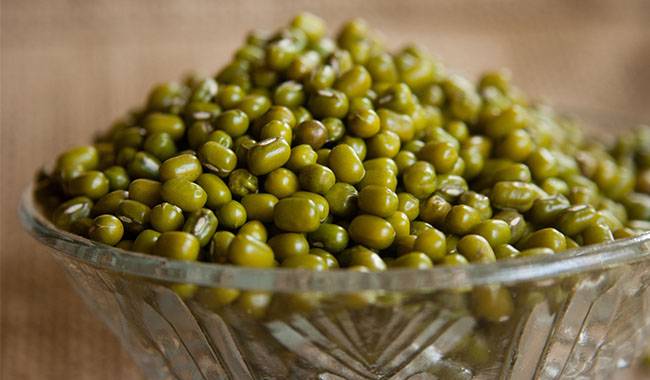
Benefits of mung beans
Antibacterial and antibacterial
(1) Certain components in mung beans have a direct antibacterial effect.
(2) Indirectly exert an antibacterial effect by improving immune function.
Lower blood lipid
Studies have found that the structure of phytosterols contained in mung beans is similar to cholesterol, and phytosterols compete with cholesterol for esterification enzymes;
It can not be esterified to reduce the intestinal absorption of cholesterol, and can reduce the serum cholesterol content by promoting cholesterol alienation and/or preventing cholesterol biosynthesis in the liver.
In addition, soy globulin has been experimentally confirmed to have the effect of lowering serum cholesterol. Whether mung bean globulin has the same effect is worth exploring.
Anti-tumor
Experiments have found that mung bean has a certain preventive effect on morphine + sodium nitrite-induced lung cancer and liver cancer in mice.
Other experiments have confirmed that the phenylalanine aminolyase extracted from mung bean has a significant inhibitory effect on mouse leukemia L 1 2 10 cells and human leukemia K 56 2 cells, and the enzyme dose increases and the action time prolongs. The inhibitory effect is significantly increased. The inhibitory rate of the enzyme with 0.7U/ml for the same 48h is 52% and 14.1%, when the enzyme is increased to 3.5U/ml, it can reach 77.1% and 85.8%, respectively, and 0.20%, 1.0%, 2.0%, 4.0%, 6.0%, 10.0% of the enzymes acted on cancer cells for 72h, and the inhibition rates were 25.8%, 40.0%, 55.3%, 72.6%, 77.9%, 82.9%, respectively.
Detoxification: food poisoning
Mung bean has a detoxification effect, which mainly means that some organic compounds in the mung bean can combine with organophosphorus pesticides, mercury, arsenic, and lead compounds to form precipitates, making them difficult to be absorbed by the gastrointestinal tract, thereby detoxifying.
Ancient Chinese physicians have pointed out the efficacy of mung bean to clear away heat and detoxify, including the heat toxins caused by fire in the body, such as acne.
On the other hand, mung beans can alleviate or relieve various poisoning situations such as food poisoning.
Tips:
When talking about mung beans, we have to mention mung bean sprouts. Mung bean sprouts are sprouts made from mung bean water and are also commonly eaten vegetables. Traditional Chinese medicine believes that mung bean sprouts are sweet in taste and cool in nature. It enters the stomach and Sanjiao Channel.
Clearing heat: eating mung beans can fight fire
First of all, the most well-known is that mung beans can clear heat. In the summer when the sun is scorching and hot, drink a few bowls of cold mung bean syrup to reduce polydipsia and refresh.
Good for spleen and stomach
In Chinese medicine, the function of replenishing the intestines and stomach or strengthening the intestines and stomach is called thick intestines and stomach. It is said that mung beans can nourish the intestines and stomach.
We know that the five internal organs are Yin, the six fu-organs are Yang, the spleen and the stomach are on the inside and the inside, the spleen is yin-like, dry and damp, and the stomach is yang-like, moisturizing and dry. At this time, the mung bean that enters the stomach meridian with cold nature can best nourish the spleen and stomach. People often say that mung bean porridge defeats the fire for this reason.
Tips:
People with cold nature, weak spleen, stomach, and cold constitution should not eat mung beans. But if you want to avoid eating too cold, you can choose to add more japonica rice to cook porridge, japonica rice is flat, nourishing the middle and nourishing qi, it is suitable for people with weak spleen and stomach.
How to store mung beans
In summer, many people have the habit of boiling mung bean soup to get rid of the heat, but mung beans are prone to insects. The bought mung beans can be stored in plastic pots or plastic bottles, like larger beverage bottles, this summer can also be the same Store it, you can save the next summer. You can put it in a large bottle of cola, and store it in the refrigerator.
Other methods:
- Put the bought mung beans in the refrigerator and freeze them for a week before taking them out, and they won’t grow insects.
- Put the mung beans in the sun and put a few slices of garlic in it.
- Wrap some peppercorns with gauze and put them in the mung beans.




